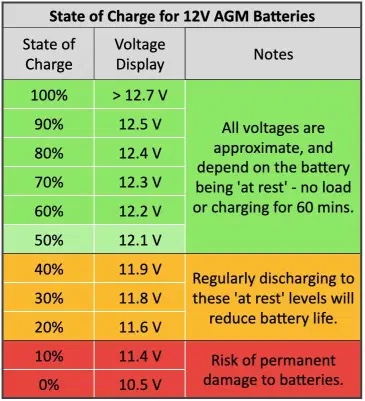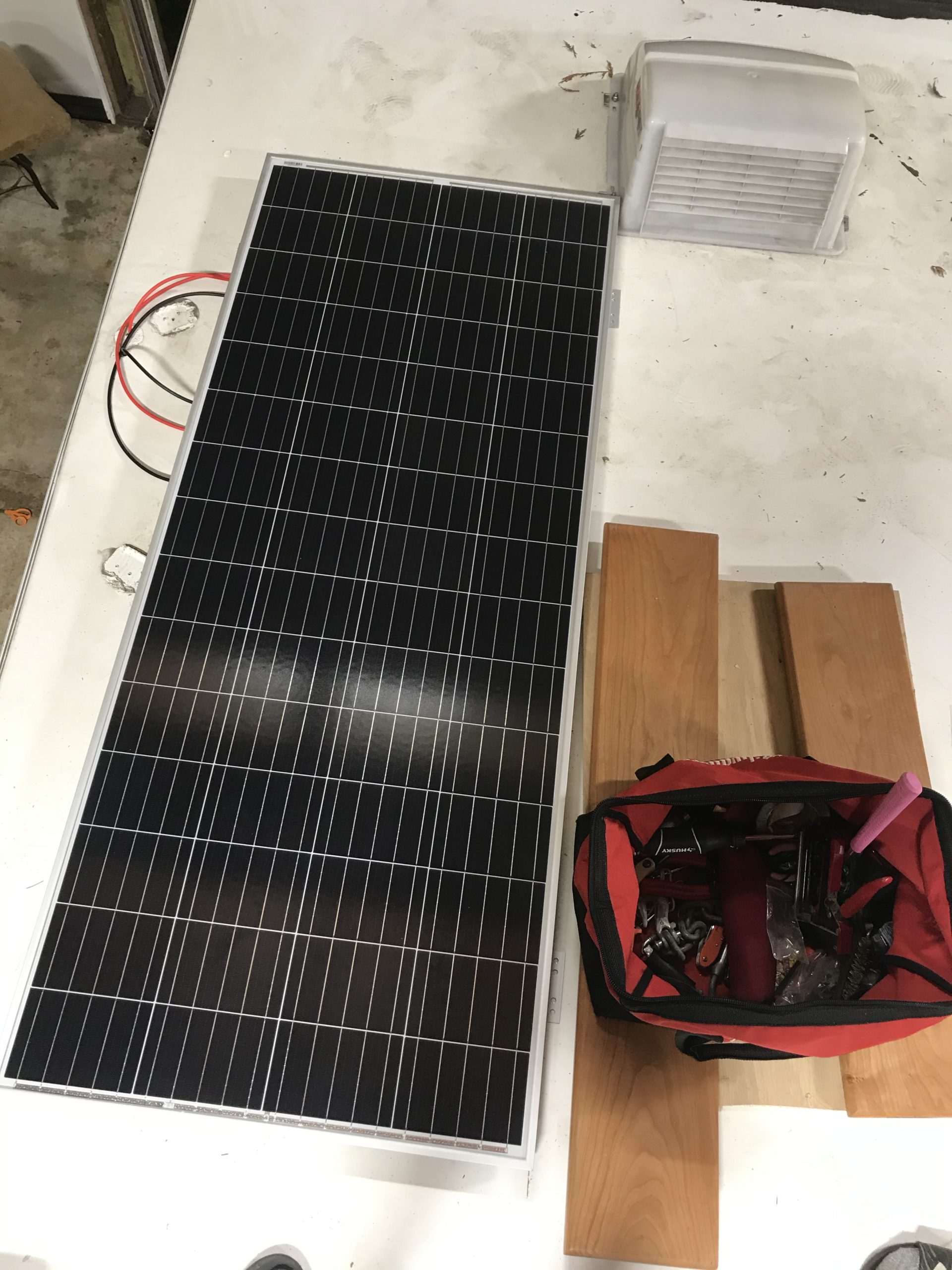Power and Wifi while living in a camper or van

Posted on March 2, 2021
Note from 10/14/21: This article is now super out of date. We redid our entire solar-electric system this summer and things are much more complex on that side of things now. The wifi situation is unchanged, and this is still a fine intro to solar systems in general, but we’ve learned a lot since I wrote this – an update on the power system is in order (will link here once complete)
Power and wifi are the two biggest constraints to making vanlife work. How are you gonna charge your computer so you can start a doomed blog? How will you connect it to the internet so you can produce value for our infinitely-growing economy?
Digital Nomad Electricity Power System
The core of your electric system is your battery. Campers and vans usually come equipped with marine batteries. These are like car batteries, but instead of just starting the vehicle (which requires a short burst of energy), marine batteries are meant to go through deep cycles of use (sustained energy over time). This is why they’re also called deep cycle batteries.
If you’re just pulling electricity from your battery to power lights or the occasional furnace overnight, you can survive for a good while without hooking up your battery to an electricity source. But if you want to charge your phone or computer, you need a way to bring power into the battery. If you don’t, you’ll deplete it super quickly, and running the battery too low damages its overall capacity.

For being off grid, I suggest buying a solar panel. Your other main option is a gas generator, but those are loud, gas-powered, and bulky. Space is at a premium in my camper, and we like the environment (even though we own a diesel truck), so we opted for a solar panel to make us feel better about ourselves. It wouldn’t be a bad idea to have a generator for backup though, because when the sun goes down or if it’s cloudy, you won’t be able to charge.

This is why the southwest is dope. It’s always sunny, even in the winter. Plus there’s a ton of BLM land you can park on for free for 14 days a spot because it’s a desert. It’s a win win.
Side note: there are ways to make vanlife work without having constant power. On our initial roadtrip west, Sonoma and I survived by charging our computers at libraries and using an inverter to charge while we were driving. If you’re not driving a ton (we were driving 2ish hours a day), you might not be able to make this work, but once libraries and public buildings are open everywhere post-COVID, you can always use those to charge unless it’s a weekend. Also this option isn’t the best because you have to be in a city or town – no multi-day boondocking allowed.
Note from 10/14/21: Don’t charge your electronics with a shit inverter like the one I linked to here. There are two types of inverters – modified sine wave inverters and pure sine wave inverters. Sensitive electronics (like computers, phones, etc) prefer to have pure sine wave electricity. Charging your devices on a modified sine wave inverter is possible, but it could lead to issues down the road. (example: one of the usb-c ports on my laptop no longer works – I am unsure if this was directly caused by using the modified sine wave inverter, but I don’t think it’s out of the question)
Vanlife Wireless Internet / Wifi
As for wifi, you need a mobile hotspot. I was already on Verizon for my phone plan, which made it easy to add a Jetpack. Verizon Jetpacks give you 30 gigs of high speed data per month, then throttle you down to super slow speeds after that. If you’re doing a few zoom meetings a week and regular web surfing (not video streaming), 30 gigs will cover one person. I live with my partner in our camper and we both have remote jobs, so we also use my phone hotspot as a secondary source of data. Normally, the additional 15 gigs per month that my original hotspot plan offered would be adequate, but last month I worked a bunch of gap year fairs (video streaming), so I upgraded it to 30 gigs. So now we have a total of 60 gigs a month between the two devices. If we needed more than this, we would have to buy another Jetpack.
As for carriers, Verizon has really good coverage. Websites like Freeroam and Campendium (great for finding BLM land, BLM campgrounds, and cool spots) show wireless coverage reviews, and Verizon is always at par or better than other carriers. And when you want to stay in the middle of nowhere for a week until your water runs out, good coverage is a requirement.
Our solar power system
Solar panel -> solar charge controller -> deep cycle battery -> PURE SINE WAVE INVERTER -> devices